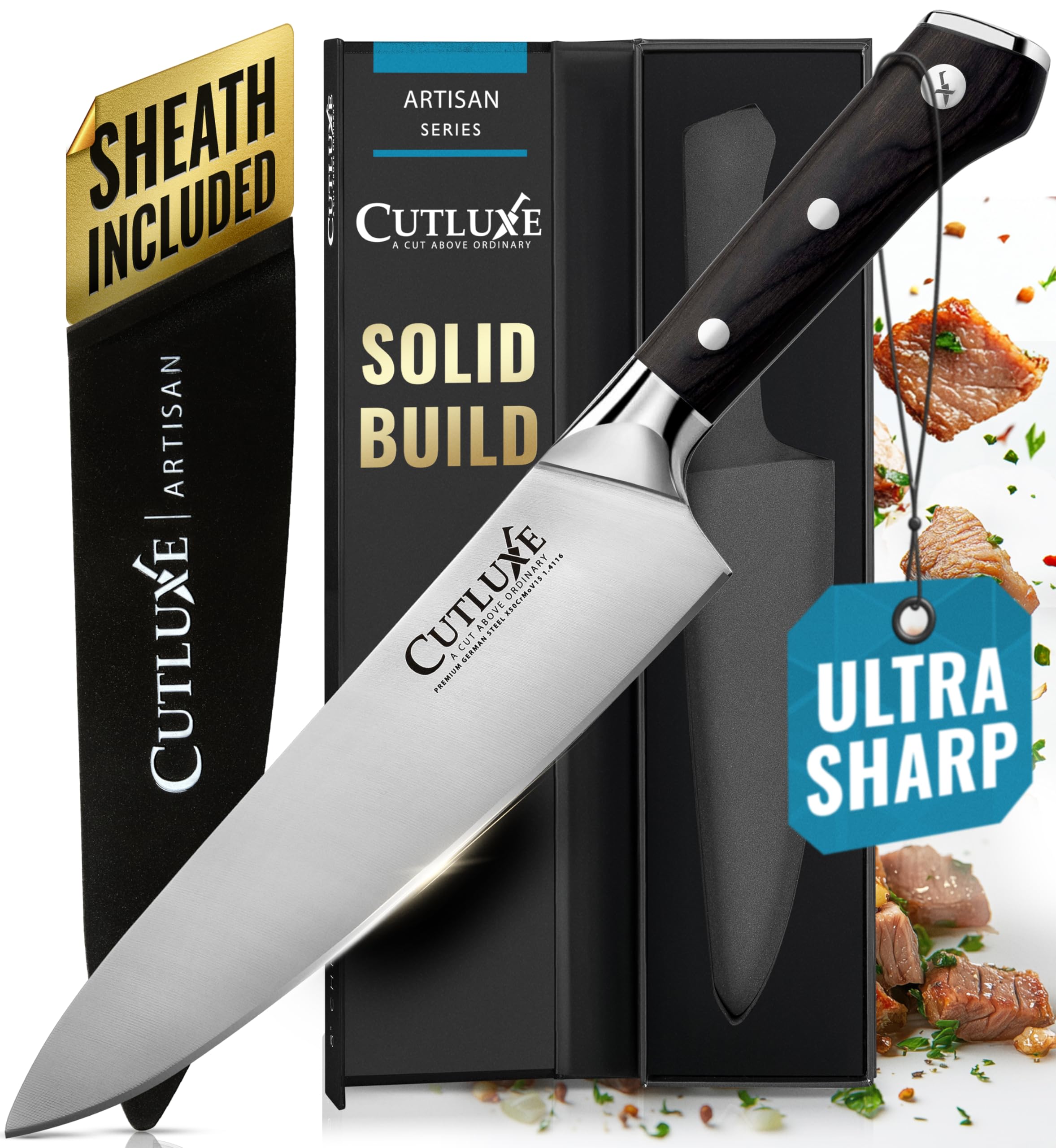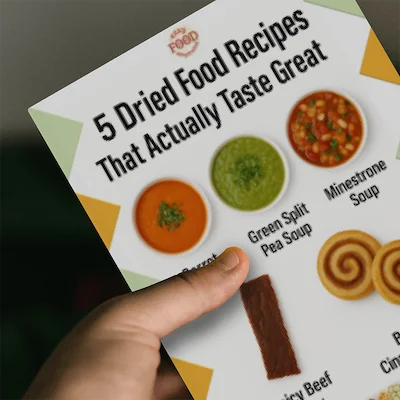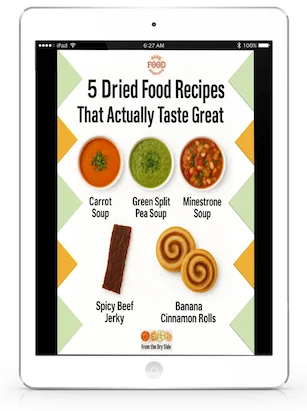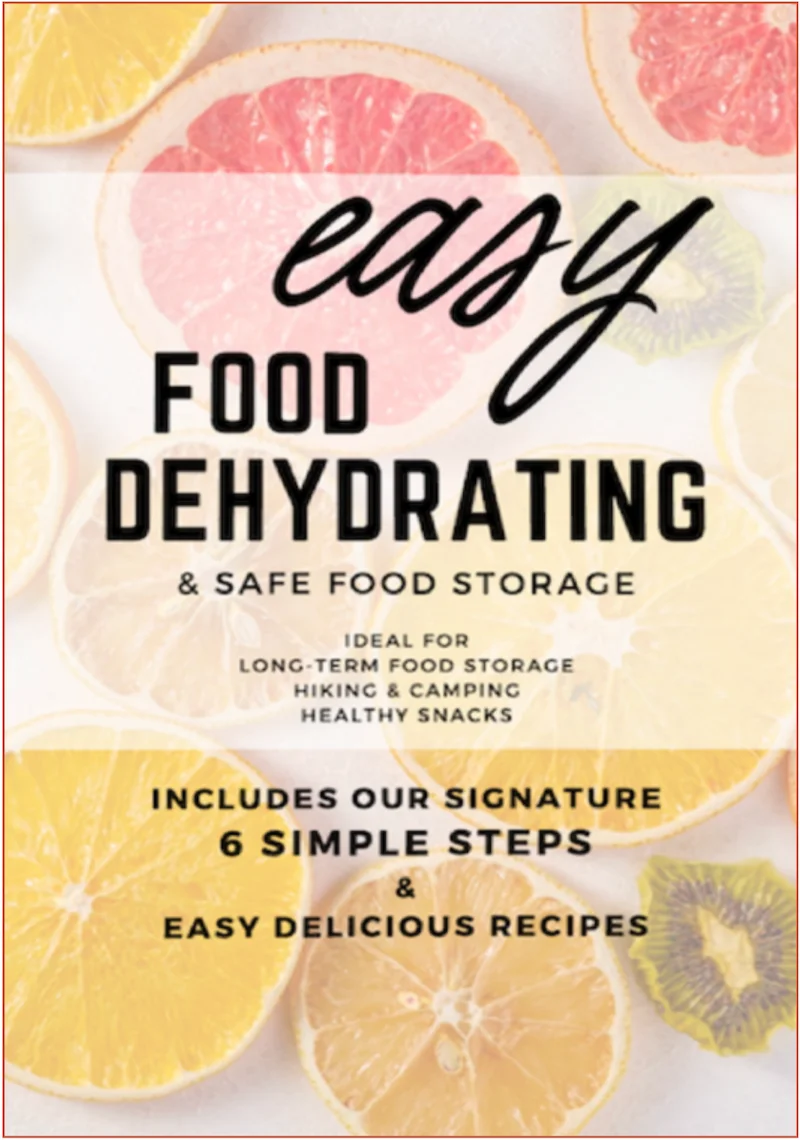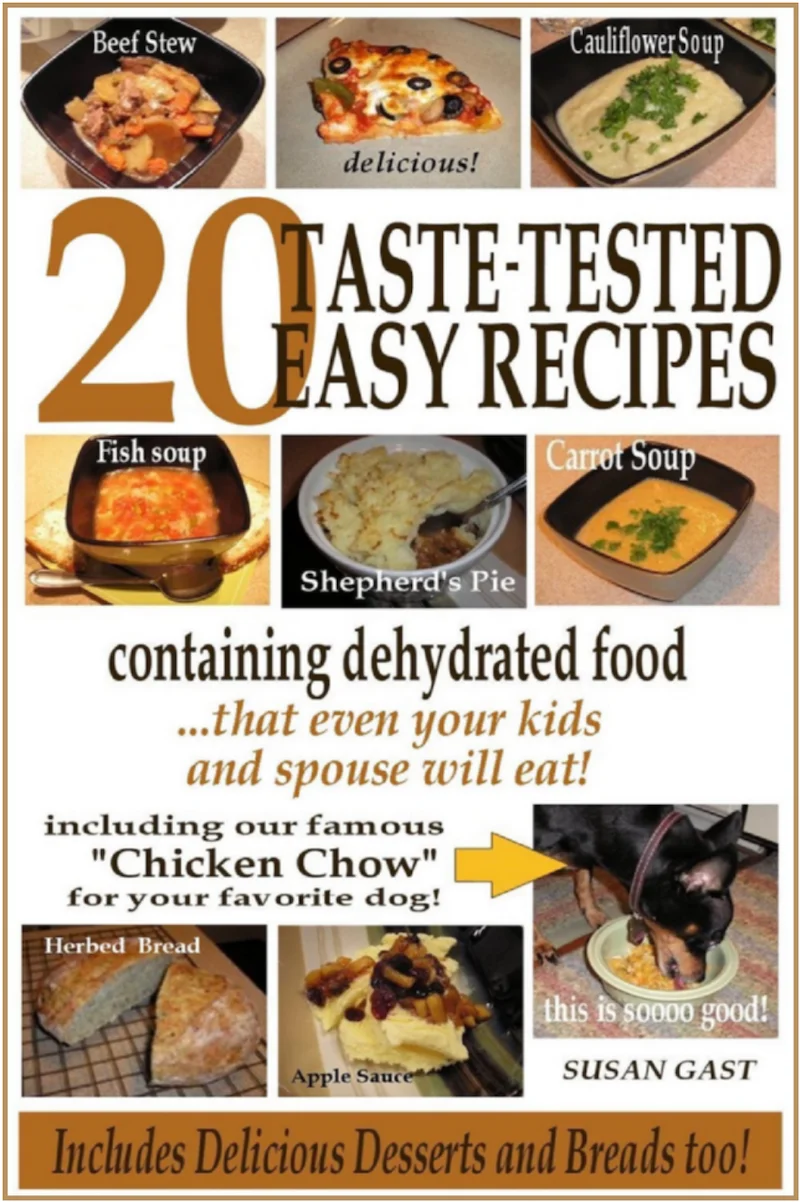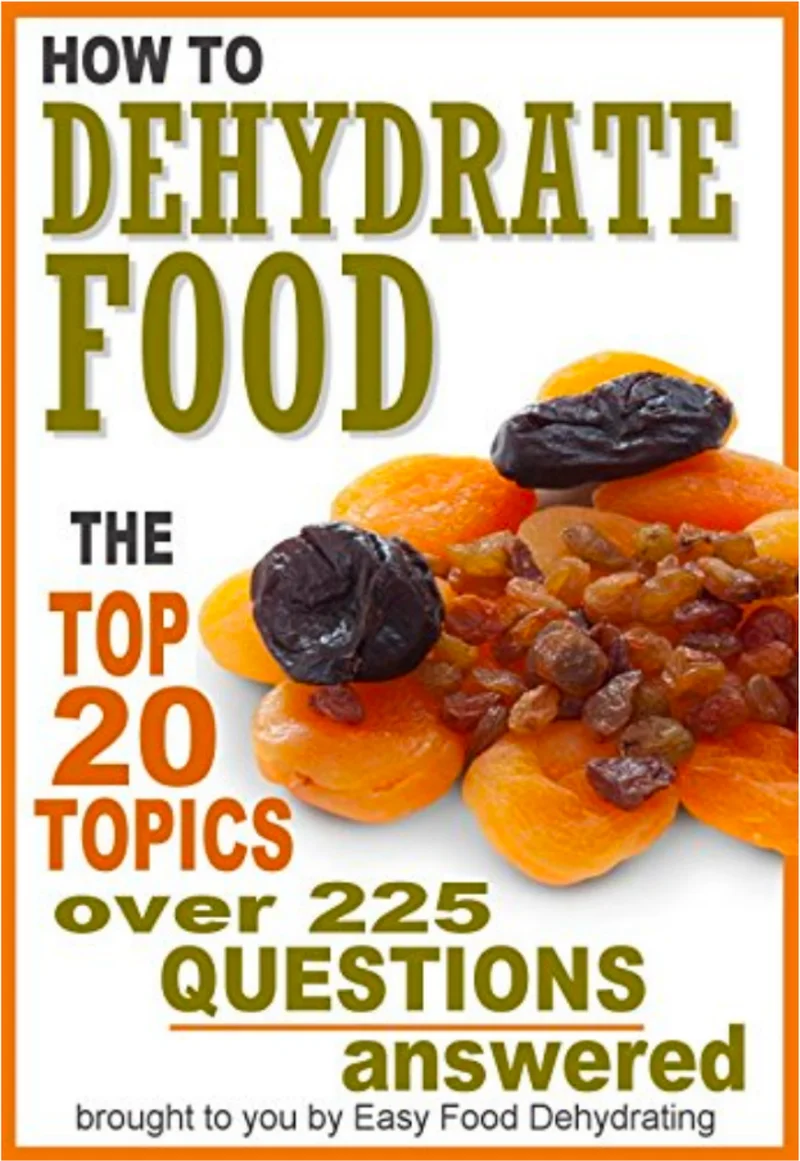What We Mean by “Dehydrate”
Here at Easy Food Dehydrating, “dehydrate” always means using an electric food dehydrator — the easy, reliable way to dry food at home.
- Home
- Dehydrating Fruits: Step-by-Step Guides by Type
- How to Dehydrate Rhubarb
How to Dehydrate Rhubarb
and Make Sauce or Jam

Rhubarb’s tart flavor makes it perfect for pies, sauces, jams, and even candy—but it’s only in season for a short time. Learning how to dehydrate rhubarb lets you preserve that bright, tangy taste year-round for baking, desserts, and smoothies.
✅ Quick Answer: How do you dehydrate rhubarb?
To dehydrate rhubarb, wash and cut stalks into 1-inch pieces, steam lightly until tender, then place on dehydrator trays. Dry at 125°F–135°F for 6–14 hours until leathery. Store in airtight containers for months of easy use in pies, sauces, or jams.
In this guide, you’ll learn the simple prep, steam, and drying steps to dehydrate rhubarb safely, plus recipes to enjoy it later as jam, sauce, or even sweet-tart rhubarb candy.
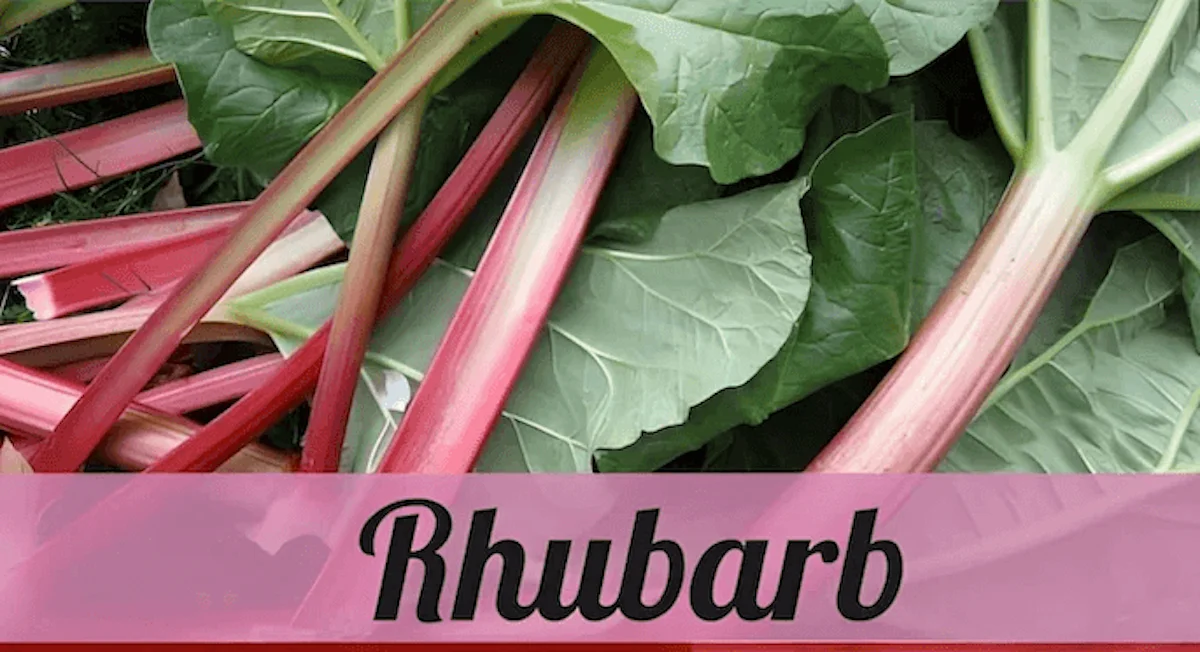
Rhubarb Nutrition: Vitamins, Minerals & Surprising Benefits
VITAMINS: Vitamin A and Vitamin C, followed by Folate, and Choline.
MINERALS: Rhubarb is a fantastic source of Potassium and Calcium, followed by Phosphorus with trace amounts of Selenium, Iron, Manganese, and Zinc!
Rhubarb also contains Omega-6 fatty acids.
Step-by-Step: The Best Way to Dehydrate Rhubarb at Home
Let's get busy learning how to dehydrate rhubarb!
- Rinse in water and then slice your rhubarb into 1" chunks
- Steam your rhubarb until it is slightly tender
- Place the rhubarb on your food dehydrator trays
- Turn on your dehydrator and set the temperature between 125°F and 135°F
(or per your food dehydrator's instructions).
💡 Tip: Outside the U.S.? Most dehydrating temps here are listed in Fahrenheit - use our quick converter to see the Celsius equivalent for your machine.
- Drying time: between 6-14 hours
- Dehydrated rhubarb will feel leathery when dried.
- Remember to rotate your food dehydrator trays, for even drying.
Use a Professional Chef's Knife!
Begin by Using a Good Sharp Knife by Cutluxe!
Check out this great chef's knife with a full tang that means the handle and blade "are one" so they can't come apart when we're slicin' and a dicin'.
I know these Cutluxe Chef knives may be a little expensive, but they do last pretty much a lifetime when you maintain their cutting edges.
As an Amazon Associate, I earn from qualifying purchases — this does not affect the price you pay. Read full disclosure.
A Sweet Memory: Growing Up with Rhubarb in the Garden
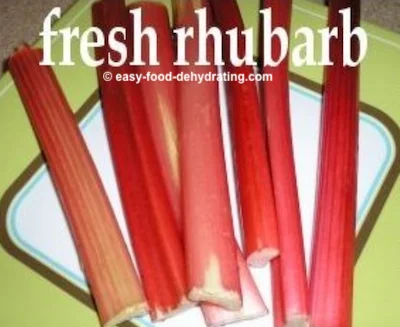
When my dad was a kid, he and his friends used to call rhubarb "yunky"—and that's meant in a good way. He can't for the life of him remember why they called it that!
When I was a kid, I remember going through our back garden—nipping over the neighbor's fence—and breaking off stalks of rhubarb (the shame of it), and then rushing home with it!
Maybe this is something I should grow myself so I don't have to hop fences and get skinned knees?
Back in the kitchen with my pilfered rhubarb stalks: I'd dip the raw end into a bowl of sugar and ate it raw. OMG. I used to eat too much of it and ended up with stomachache!
Why Rhubarb Thrives in the UK (and Struggles in Florida)
As mentioned above about my eating
rhubarb from the neighbor's yard, I think I remember seeing a few stalks growing in our
own yard too—but it's that 'grass is always greener on the other side' syndrome!
LOL (Yeah, whatever you say, Susan, we believe you).
Anyway, just wanted to say that living
in the UK, with plentiful rain, and 'some sunshine', they sure have perfect
growing conditions. I never did learn how to dehydrate rhubarb when I lived in the UK.
I'm comparing this to where I live now, in sunny hot central Florida. When you get older, you realize that when you were young you didn't know that something as special as fresh rhubarb would become something to not take for granted.
Rhubarb in our local grocery store is not cheap, so when it's in season at the store, I get busy dehydrating rhubarb!
Rhubarb Recipes: From Pies to Jam and Sauces
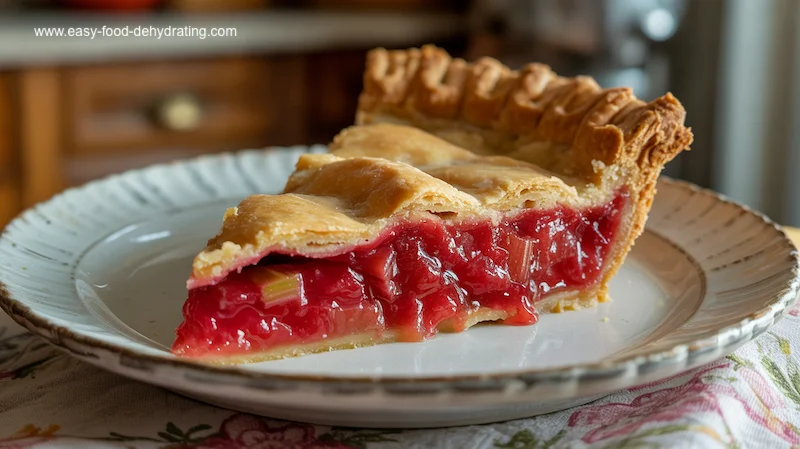
This link is a great source for AllRecipes Rhubarb Recipes
Easy Homemade Rhubarb Sauce Recipe
Rhubarb sauce is often served with ice cream or desserts.
Ingredients:
- 1 pound fresh rhubarb, washed and cut into 1-inch pieces
- 1/2 cup white sugar
- 1/4 cup water
- 1 tablespoon cornstarch
- 1 teaspoon vanilla extract
Instructions:
- In a saucepan, combine rhubarb, sugar, and water.
- Cook over low heat until the sugar is dissolved and the rhubarb is soft, about 10 minutes.
- Mash the rhubarb with a spoon or use an immersion blender.
- In a small bowl, whisk together cornstarch and vanilla extract. Add this mixture to the rhubarb sauce and stir until thickened.
- Pour into a serving dish and refrigerate until chilled.
Simple Rhubarb Jam Recipe (With Easy Canning Tips)
Here is a simple recipe for making rhubarb jam:
Ingredients:
- 1 lb rhubarb, chopped into 1/2 inch pieces (about 4 cups chopped)
- 1 cup white sugar
- 1/4 cup water
- 1 tablespoon lemon juice
Instructions:
- In a large saucepan, combine the chopped rhubarb, sugar, water, and lemon juice. Bring to a boil over medium-high heat, stirring frequently.
- Once boiling, reduce heat to medium-low and simmer, uncovered, for 15-20 minutes, continuing to stir occasionally. The rhubarb will start to break down and the mixture will thicken.
- Once the jam has thickened to your desired consistency, remove it from the heat. For a smoother jam, you can blend briefly with an immersion blender.
- Ladle the hot jam into sterilized jars, leaving 1/4 inch headspace. Wipe rims clean and attach the lids and rings.
- Process the sealed jars in a water bath canner for 10 minutes. Adjust canning time if you live at a high altitude.
- Remove jars and allow them to cool completely. Check that the lids sealed properly. Store in a cool, dark place for up to 1 year.
- Once opened, store in the refrigerator for 3-4 weeks. Enjoy on toast, scones, or crackers!
The key to good jam is cooking the rhubarb until it breaks down and releases its juices. Be sure to stir frequently while simmering to prevent burning. Adding lemon juice brightens the flavor. Adjust sugar to taste based on the tartness of the rhubarb.
Enjoy your homemade rhubarb jam!
DIY Rhubarb Candy: Sweet and Tart Snack Idea
Yes, you can turn dehydrated rhubarb pieces into a sweet and tart candy treat. Here is an easy recipe to follow:
Ingredients:
- 1 lb rhubarb stalks, washed and chopped
- 1 cup white sugar
- 1⁄4 cup water
- 1 tbsp lemon juice
Instructions:
- In a saucepan, mix the sugar, water, and lemon juice. Heat over medium, stirring occasionally, until sugar is dissolved.
- Add chopped rhubarb and simmer for 2-3 minutes just until slightly softened but still firm. Drain syrup.
- Arrange rhubarb pieces in a single layer on dehydrator trays. Dehydrate at 135°F for 6-8 hours until no moisture remains.
- Toss dried rhubarb bits into the remaining syrup mixture. Return to dehydrator for 2 hours at 145°F.
- Remove dried candy pieces, and let fully cool and harden on a baking sheet. Coat in sugar or citric acid if desired.
- Store finished candied rhubarb in an airtight container like a Mason jar for up to 1 month.
You now have a sweet-tart natural fruit candy full of flavor! Adjust ingredient amounts to suit your taste preferences.
FAQs: Your Top Rhubarb Dehydrating Questions Answered
What are the different types of rhubarb?
What are the different types of rhubarb?
There are several different types of rhubarb that you can grow. Some of the most popular varieties include:
- Victoria Rhubarb: Victoria rhubarb is a type of rhubarb that is early-maturing and cold-tolerant. Victoria rhubarb has green stalks with red tips.
- Hales Best Jumbo Rhubarb: Hales Best Jumbo Rhubarb is a type of rhubarb that is large (as the name implies!) and has dark green stalks.
- Canada Red Rhubarb: Canada Red rhubarb is a type of rhubarb that is cold-tolerant and has red stalks.
Do I need to steam rhubarb before dehydrating it?
Do I need to steam rhubarb before dehydrating it?
Yes. Steaming softens the tough fibers and helps rhubarb dry evenly. Skipping this step can lead to chewy, uneven pieces.
How do I know when dehydrated rhubarb is ready?
How do I know when dehydrated rhubarb is ready?
It should feel leathery and bend without breaking. If pieces are still sticky or wet, continue drying until no moisture remains.
What’s the best way to store dehydrated rhubarb?
What’s the best way to store dehydrated rhubarb?
Keep dried rhubarb in airtight Mason jars or food vacuum-sealer bags. Store in a cool, dark place, and it will last for 6–12 months.
How do I rehydrate rhubarb?
How do I rehydrate rhubarb?
Soak dried rhubarb pieces in hot water for 15–20 minutes until plump, then use them in pies, sauces, or jams as you would fresh rhubarb.
Can I make candy from dehydrated rhubarb?
Can I make candy from dehydrated rhubarb?
Yes! Toss dried rhubarb in sugar or syrup and dehydrate again for a tangy, chewy candy treat.
Now that you know how to dehydrate rhubarb, you’ll never have to miss its tart, refreshing flavor when it’s out of season. Try it in pies, sauces, jams—or even as tangy homemade candy.
And before you go, don’t forget to grab your free 5 Dried Food Recipes You’ll Actually Love PDF (below). From hearty soups like carrot and split pea to sweet treats like banana cinnamon rolls, these recipes make the most of your preserved foods.
Get 5 Dried Food Recipes You'll Actually Love
Here's where you can get your copy of our all new
5 Dried Food Recipes (That Actually Taste Great)
They're my all-time favorite easy dried food meals!
Get it here right now.
For Free!
Before You Go...
If you enjoyed this page, tap the ❤️ in the lower right-hand corner.
It saves this page to your Grow bookmarks so you can find it again later.
You’ll also see quick share buttons to copy the link, post to Facebook,
or save it straight to Pinterest.
